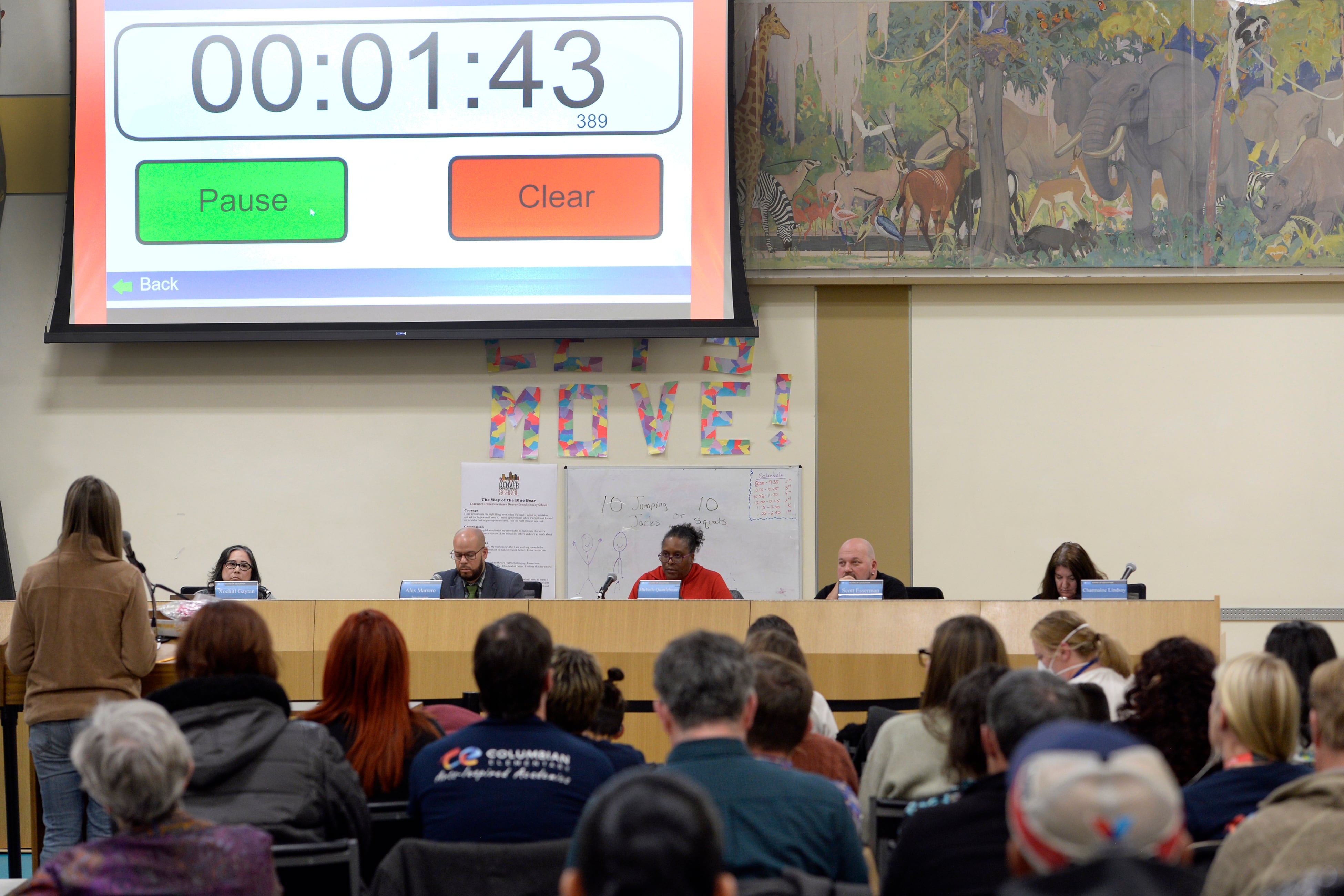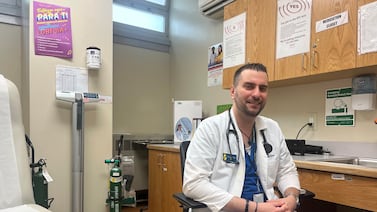Update, Feb. 9: Since this story was published on Jan. 31, DPS released two more potential redistricting scenarios. This story has been updated to include them.
Denver Public Schools is seeking feedback on six proposals to change the boundaries of its school board seats. By law, each board member must represent roughly the same number of people — and if the U.S. Census shows the balance is off, the district must adjust.
The redistricting process won’t affect school attendance boundaries. Redistricting is about which neighborhoods each school board member represents.
Denver has five geographic school board districts: District 1 in southeast Denver, currently represented by Scott Baldermann; District 2 in southwest Denver, represented by board President Xóchitl “Sochi” Gaytán; District 3 in east-central Denver, represented by Carrie Olson; District 4 in northeast Denver, represented by Michelle Quattlebaum; and District 5 in northwest Denver, represented by Charmaine Lindsay.
Redistricting does not affect the board’s two at-large seats held by Vice President Auon’tai Anderson and member Scott Esserman, who represent the entire city.
Denver Public Schools is seeking feedback on its redistricting proposals through an online survey and a series of in-person and virtual meetings being held through Feb. 15.
All seven board members will vote on the new district boundaries in March. The new boundaries will go into effect in April. They will be in place for the November election when three board seats — in Districts 1 and 5 and an at-large seat — will be up for grabs.
The main problem that DPS is trying to solve is that District 4 in northeast Denver is too big and District 2 in southwest Denver is too small. The population of all districts grew between the 2010 and 2020 Censuses, district data shows, even as the school-age population shrunk due to declining birth rates and higher housing prices pushing families out of the city.
But the population growth has been uneven. District 4 grew the most by adding 38,144 residents, a 32% increase. District 2 grew the least, adding just 3,753 residents, a 3% increase.
By state law, the difference in population between the biggest and smallest districts must be 10% or less. Right now, it’s 24%, according to a district presentation.
District staff originally posted four maps labeled scenarios A, B, C, and D. It later added two more scenarios, E and F. In the six scenarios, the difference in population between the biggest and smallest districts ranges from 3.5% to 6.2%.
Each scenario adjusts the boundaries in different ways. In scenario A, for example, District 2 would gain several neighborhoods, including Sun Valley and Lincoln Park, while District 4 would lose neighborhoods including Five Points and the downtown area. Scenario A would adjust the boundaries of Districts 3 and 5 too.
The goal of redistricting is to make sure everyone in the city has equal representation on the school board, said Liz Mendez, executive director of enrollment and campus planning for DPS. If a district has too many residents, it’s harder for those residents to get the attention of their school board member to voice their concerns.
But redistricting can be tricky. In coming up with the maps, Mendez said district staff paid particular attention to the racial makeup of the districts so as not to dilute the voice of any group.
The district also paid close attention to 14 so-called “communities of interest” that were identified during a recent contentious effort to redistrict Denver city council seats, Mendez said. Those communities of interest include individual neighborhoods, such as Capitol Hill, and wide geographical swaths, such as West Denver and North Denver.
“Sometimes the current districts have cut through communities of interest,” Mendez said. “We want to make sure we aren’t further subdividing them — or in some cases, we’re reuniting a community of interest in the way we’ve changed the lines.”
Melanie Asmar is a senior reporter for Chalkbeat Colorado, covering Denver Public Schools. Contact Melanie at masmar@chalkbeat.org.






